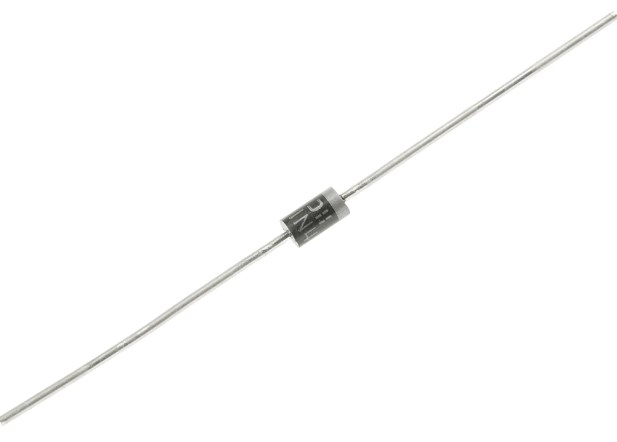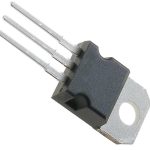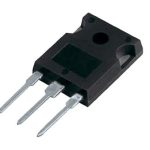When it comes to selecting the right diode for your electronic projects, it’s crucial to have a good understanding of their specifications and capabilities. In this blog, we delve into the details of the widely used 1N4007 diode, exploring its features, applications, and performance characteristics.
What is 1N4007?
1N4007 is a standard rectifier diode. It is part of the 1N400x series of diodes, which are widely used in various electronic circuits for rectification purposes. The “4007” in the name indicates that it is the seventh member of this series.
What is 1N in 1N4007 Diode?
The “1N” in the diode’s name signifies that it belongs to the 1N series of diodes. The “1N” prefix is commonly used to represent general-purpose diodes.
What is a 1N4001 Diode Used for?
1N4001 diode is primarily used for rectification applications. It is specifically designed for converting alternating current (AC) into direct current (DC). It can handle a maximum continuous forward current of 1A and has a maximum reverse voltage rating of 50V.
Features
The features of 1N4007 diode include:
- Maximum repetitive peak reverse voltage: 1000V
- Average forward rectified current: 1A
- Forward surge current: 30A
- Low forward voltage drop
- High surge current capability
- Fast recovery time
Specs
| Product Attribute | Attribute Value |
|---|---|
| Diodes Incorporated | |
| Product Category | Rectifiers |
| Through Hole | |
| 1 kV | |
| 1 A | |
| Standard Recovery Rectifiers | |
| Single | |
| 1 V | |
| 30 A | |
| 5 uA | |
| 2 us | |
| – 65 C | |
| + 175 C | |
| Reel | |
| Cut Tape | |
| Brand | Diodes Incorporated |
| Height | 2.71 mm |
| Length | 4.7 mm |
| Product | Rectifiers |
| Product Type | Rectifiers |
| Subcategory | Diodes & Rectifiers |
| Termination Style | Axial |
| Width | 2.71 mm |
| Unit Weight | 0.010582 oz |
Advantages
- High voltage rating: With a maximum reverse voltage of 1000V, the 1N4007 diode can handle higher voltage levels compared to other diodes in the 1N400x series.
- High current capacity: It can handle a maximum continuous forward current of 1A, making it suitable for various power supply and rectification applications.
- Low forward voltage drop: The diode has a relatively low forward voltage drop, which helps minimize power losses in circuits.
- Fast recovery time: The 1N4007 diode has a fast recovery time, allowing it to quickly switch between conducting and non-conducting states during rectification.
- Cost-effective: The 1N4007 diode is widely available and relatively inexpensive, making it a popular choice for many electronic projects.
Price
The price of a 1N4007 diode can vary depending on factors such as brand, quantity purchased, and the seller’s pricing strategy. Generally, it is considered to be an inexpensive diode, with prices ranging from a few cents to a few dollars per piece. You can check the price table below to help you make a budget:

Practical application
The 1N4007 diode has various practical applications in electronic circuits, including:
- Rectification: It is commonly used for converting alternating current (AC) to direct current (DC) in power supplies and other rectification circuits.
- Voltage clamping: The diode can be used to limit the voltage across a circuit by acting as a clamp when the voltage exceeds a certain threshold.
- Flyback diode: It can be employed as a flyback diode in circuits that involve inductive loads, such as relays or motors, to protect other components from voltage spikes generated when the load is switched off.
- Reverse polarity protection: By placing the diode in series with a circuit, it can prevent damage due to reverse polarity connection.
1N4007 ECAD Model
PCB symbol and Footprint


Datasheet
You can click here to learn more useful information about 1N4007.
1N4007 Diode Problems
- Overheating
If the diode gets excessively hot during operation, it may indicate excessive current flowing through it. Check the circuit for any short circuits or incorrect connections, and ensure that the diode is not subjected to currents beyond its specified limits.
- Voltage drop issues
If the forward voltage drop across the diode is significantly higher than expected, it could be due to a faulty or damaged diode. Replace the diode with a new one and verify if the issue persists.
- Reverse breakdown
In some cases, the diode may fail and exhibit a significant reverse leakage current or even a reverse breakdown. This can be caused by exceeding the maximum reverse voltage rating or subjecting the diode to high voltage transients. Make sure to operate the diode within its specified limits and protect it from excessive reverse voltage.
How to Test a 1N4007 Diode?
To test a 1N4007 diode, you can follow these steps:
- Turn off the power to the circuit or disconnect the diode from the circuit.
- Set your multimeter to the diode testing mode (usually denoted by a diode symbol).
- Connect the positive probe of the multimeter to the anode (longer lead) of the diode and the negative probe to the cathode (shorter lead).
- Observe the reading on the multimeter. If the diode is working properly, it should display a forward voltage drop typically around 0.6V to 0.7V. If the reading is close to zero or shows no conduction in both directions, the diode may be faulty.
- Reverse the connections of the probes, with the positive probe now connected to the cathode and the negative probe to the anode. A properly functioning diode should show a high resistance or no conduction in this reverse-biased direction.
- If the readings are not as expected or there is no conduction in either direction, the diode may be defective and should be replaced.

FAQs
Is 1N4007 a Schottky Diode?
No, 1N4007 is not a Schottky diode. It is a standard rectifier diode.
Can I use 1N4007 instead of 1N4001?
Yes, you can use 1N4007 instead of 1N4001. The main difference between these two diodes is their maximum voltage rating. While 1N4001 has a maximum voltage rating of 50V, 1N4007 has a higher maximum voltage rating of 1000V. So, using 1N4007 instead of 1N4001 will not cause any issues as long as the voltage requirements of your circuit are within the capabilities of the 1N4007.
What is the max current of 1N4007?
The maximum average forward current (also known as the continuous forward current) of 1N4007 is 1A (Amperes).
How much voltage can a 1N4007 diode handle?
The maximum reverse voltage that a 1N4007 diode can handle is 1000V (Volts).
Conclusion
Armed with a comprehensive understanding of the 1N4007 diode, you can confidently make informed decisions about incorporating it into your circuits. Its high voltage and current ratings, along with its wide availability and affordability, make the 1N4007 an excellent choice for a variety of applications.



